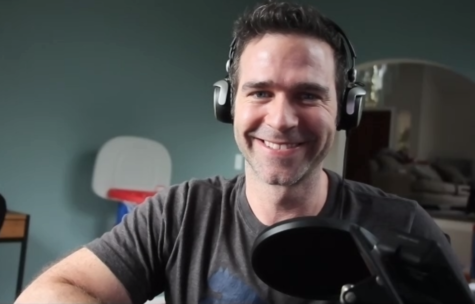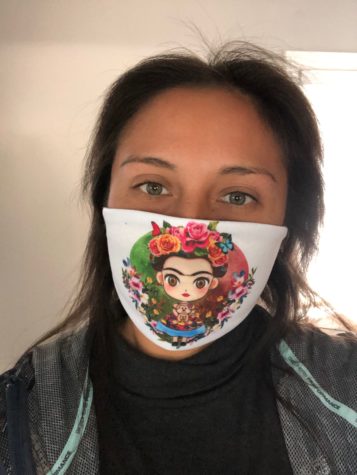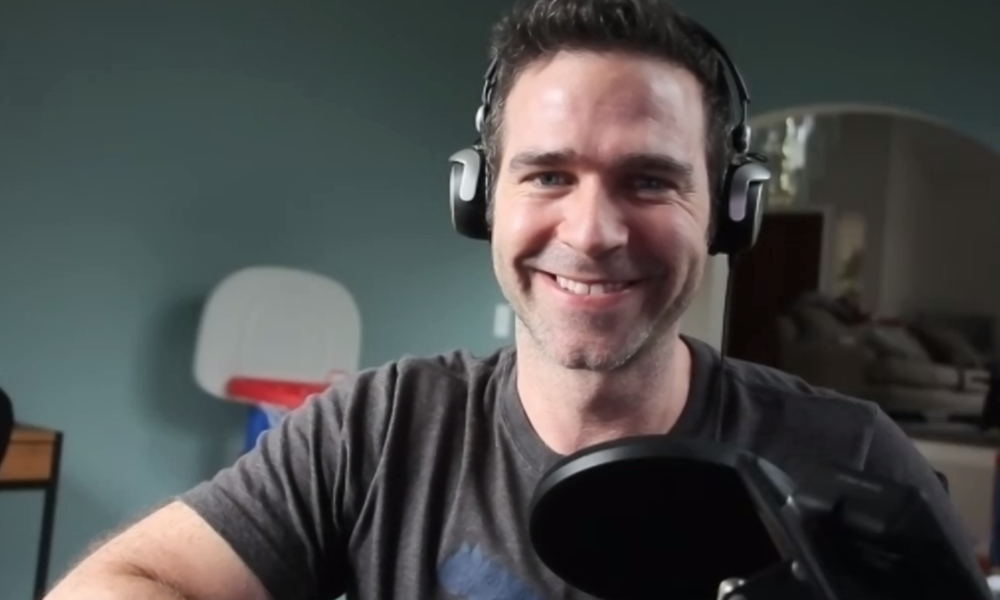The transition to virtual learning at Long Beach State has been challenging for many students, from bad internet connection to distracting households and feelings of disconnect.
But students were not the only ones having to adjust.
As spring semester continues with distance learning, CSULB professors share their experiences leading virtual classrooms amid the coronavirus pandemic.
Joshua Cotter, an associate professor in the Kinesiology Department, said he’s had a good experience exploring all the “technological advancements” and resources that have been offered to allow for “successful teaching online.”
Cotter has a background in technology, pursuing a bachelor’s degree in career technology early on as a student at Ohio State University in the late ’90s, making him comfortable around the new approach to virtual learning.

“I learned a lot and there were some hiccups along the way but overall, I think [virtual instruction] actually went very well, given the circumstances,” Cotter, who has been teaching at CSULB for six years, said.
However, Cotter said he felt that online classes limited some of the more enjoyable experiences as a professor, such as interacting with students or seeing them succeed outside of the classroom.
“That’s a lot different online than in-person,” Cotter said. “You know the little meetings and discussions that we often have after class or in my office aren’t really substituted well in an online environment.”
During a regular semester, Cotter walks around his classroom as his students work in groups, discussing ideas and then coming together to express these ideas amongst the whole class.
“The challenging part preparing for this [past] semester was ‘how do I recreate that same experience in a virtual environment,’” Cotter said. “I had to look into how the technology worked a little bit more. There was a lot more trial and error in how to do that with things like Zoom breakout rooms.”
Despite the lack of interaction and never actually meeting his students face-to-face, Cotter said he was still able to connect with them, as they insisted on meeting with him one-on-one throughout the semester.
Finding the balance to create a virtual classroom that fit the needs of students and the course was something Clariza Ruiz De Castilla, a professor in the Communications Department, had to discover as well.
At first, Ruiz De Castilla said she pre-recorded lectures, trying to help her students amid the suddenness of the coronavirus pandemic. Since the start of spring semester, Ruiz De Castilla has returned to synchronous learning and feels that her students are already better understanding concepts and benefit from having the ability to ask questions live.

But one challenge for Ruiz De Castilla has been building class engagement when so many students chose to turn their cameras off.
She said she is lucky to get one student with their camera on out of a class of 25 or 27 students. So Ruiz De Castilla created class participation, incentivizing students with points to speak in the virtual classroom.
“If we were in a face-to-face [class], they’d be in circles, and they’d be talking and I wouldn’t have to say, ‘This is going to be worth points,’” Ruiz De Castilla said. “They would just do it. They would just get it whereas here, I’m forcing it more to have to participate.”
Ruiz De Castilla encourages students to be kind to themselves and to do their best in their classes, however their best may look like during this time. Likewise, she said she hopes students are aware that faculty are trying to learn how to be better online instructors.
“We teachers, we’re trying really hard to make the material engaging, to familiarize ourselves with the technological landscape,” Ruiz De Castilla said. “So if [students] would also try their best so we could have a middle ground so that we could meet halfway.”
Like Ruiz De Castilla, professor Patricia Amezcua said getting students to feel comfortable and turn on their cameras was a challenge to overcome. As a professor part of the Spanish program at CSULB, she also deals in communication.
Being able to see people when they are speaking, she said, is an important element in strong communication because people can pick up on gestures or facial expressions. Amezcua said that makes students feel more connected and puts them at ease, which was needed as Amezcua worked to create a sense of normalcy.
Amezcua created a virtual classroom for her students and encouraged her students to feel comfortable talking regardless of background noise. She also created discussion questions that were not only related to the class, but for students to share about their lives and feelings amid this time.
When students were put into breakout rooms, Amezcua gave students an extra minute for them to socialize before sending them to different breakout groups, trying to cultivate interaction between everyone enrolled.
“Another important thing is to start to encourage [students] to see toward the future,” Amezcua said. “To understand that this was something that is happening but is not going to last forever. However, the experience and the knowledge they’re gaining is going to last them a lifetime.”
Amezcua also said that she knew colleagues at CSULB who had not taught an online class before and that for them, it was as foreign as learning a difficult language or subject. That adjustment took time, but Amezcua said she has seen her colleagues all try their best.
“Not only the students are overwhelmed and nervous and isolated and with economical pressures, we professors who are suffering exactly the same,” Amezcua said. “And on top of that we have the responsibility to teach the next generation to continue our commitment to teach.”
Cotter, Ruiz De Castilla and Amezcua have all been part of the CSULB community.
But for professor Azza Basarudin, who joined the Women’s, Gender and Sexuality Studies Department in the 2020 fall semester, the first fully distanced-learning semester was her introduction to CSULB.
As a new member of the campus, Basarudin said she spent the summer familiarizing herself with campus resources and facilities so that she could be of assistance to her students. But she also made sure to inform her students that she was new, inviting them to share resources with her or if they could, to let her know ahead of time what they may need help with for her to better support them.

That, alongside her colleagues in the department and the College of Liberal Arts’ workshops and monthly meetings to help new faculty transition to the school, helped Basarudin as she continued the semester.
Yet Basarudin had experience teaching online classes before.
“The key to my teaching online for me, based on my feminist pedagogy, is to make sure that students understand that they’re not just a face in my class or a name in my class, right, that they are humans with life complexities and responsibilities outside the classroom,” Basarudin said.
Basarudin said she would give students points if they attend office hours so that they could share with her their personal challenges amid the coronavirus pandemic. That allowed Basarudin to not only develop a deeper bond with each student, but helped her create a safe learning space and be mindful as to what her students were going through.
Inside the classroom, Basarudin has incorporated discussions about current events, from Black Lives Matter movement to the coronavirus pandemic, to show how course topics can play out in reality as well as help students examine their own relationships to concepts.
That helps keep students engaged in the virtual classroom, according to Basarudin.
But Basarudin also took feedback from her students, saying that she learns from her students as well. Based off of last semester, Basarudin learned to be flexible when it comes to deadlines for assignments.
That mutual understanding served Basarudin and her students.
And understanding is something that can be extended to everyone, including faculty.
“We are also trying our best, definitely trying our best, to make sure that [students] receive the quality of education that we deploy in normal times in spite of the online learning,” Basarudin said.
Fernando Haro contributed to this story.




